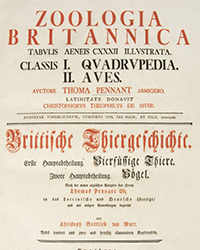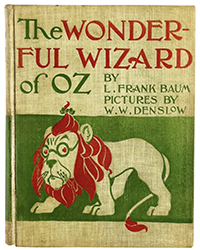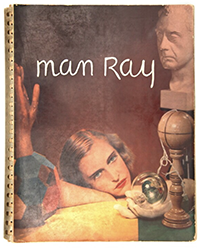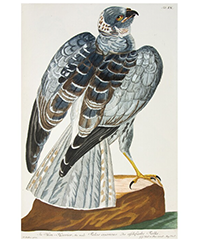Basil Hall’s narrative of travels in North America (Edinburgh, 1829) is everything you’d expect from an officer of the British navy (from Scotland, though): a boring display of self-laudatory reflections. It is, nonetheless, interesting; especially since Hall used a Camera Lucida to illustrate his book—a what?
Basil’s Travels
When Basil Hall (1788-1844) went to North America with his wife and his young daughter in 1827, he’d already travelled the world. He fought during the Napoleonic wars, and then went to Korea and Japan, publishing an account of those travels in 1818. His Travels In North America In The Years 1827 and 1828 first came out in Edinburgh in 1829. It’s a 3-volume set illustrated with a folding hand-coloured map of the East Coast of America “showing Capt. Hall’s route” and engraved by WH. Lizars. A nice little instruction is printed in the lower right corner, reading: “The Binder will fix this Map into the 1st Vol. at this part, so that it may open upwards.” According the Rare Book Hub Transaction History, a not so nice copy went for $318 in 2024 (Leslie Hindman Auctioneers), while a charming one in its original wrappers went for $630 the same year (Grant Zahajko Auctions). Got the opportunity to get one the other day, and I had a heart attack while reading the introduction: “During the journey, I had the opportunities of making some sketches with the Camera Lucida, an instrument invented by the late Dr. Wollaston.” Beg your pardon? A portative camera in 1827! And not a single reproduction in my copy? The next sentence cooled me down: “But I have thought it best (...) to publish, in a separate form, a selection of those which appeared most characteristic.” The said collection of plates was released in Edinburgh in 1829 under the title Forty Etchings from Sketches Made with the Camera Lucida... A copy went for $343.75 in 2023 in Canada, and another one for GBP 312 the previous year in England (Rare Book Hub Transaction History). Camera Lucida is a peculiar tool.
Camera Lucida
The first photograph was taken by Niepce in 1822, so there’s no way Hall could have taken photographs in North America 5 years later. Camera Lucida is actually “an optical device used as a drawing aid (...). It projects an optical superimposition of the subject being viewed onto the surface upon which the artist is drawing.” (Wikipedia). Hall admits that it exempted him "from the triple misery of perspective, proportion, and form." Yet, the camera, he writes to George Dollond in 1830, “has no means of supplying taste, or industry to persons, who by nature are destitute of these gifts—neither will it enable people, who are totally ignorant of the use of the pencil, whatever be their talents, to make good drawings, without considerable practice.” The results are good, but mostly as far as sceneries are concerned—the portraits thus realized prove less convincing. Camera Lucida was patented by Mr Wollaston in 1806, but the principle itself was known from ancient times. In 2001, David Hockney, an English painter, created a controversy after he claimed that painters such as Ingres, Van Eyck or Caravaggio were making extensive use of it to draw their paintings. Just like Hall in his time, Hockney retorted: do not consider the tool, but the man who uses it. In 1830, the aforementioned George Dollond, optician to His Majesty, was the only manufacturer of the Camera Lucida. He printed a manual of the camera, Description of the Lucida Camera, An Instrument For Drawing In True Perspective. He joined Hall’s letter to it as well as an explanatory engraving (see illustration). So, Basil Hall’s Travels In North America... is complete without the illustrations, yet somehow incomplete.
There are many other interesting things about Hall’s travels. There was, he says, a “mutual hostility so manifestly existing between America and England.” He tried to remain objective, though—but at the end of the day, “I find (...)that the most striking circumstance in the American character (...) was the constant habit of praising themselves, their institutions, and their country, either in downright terms, or by some would-be indirect allusions, which were still more tormenting.” And, he adds, “to praise one’s country appears, to say the least of it, in the next degree of bad taste.” Whether he’s right or not is, I guess, a matter of perspective, form and proportion. Unfortunately, no Lucida Camera could exempt him from those miseries in human matters.
Thibault Ehrengardt



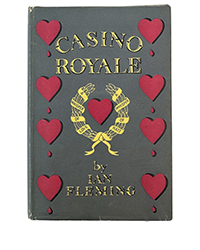
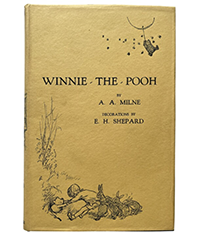
![<b>Sotheby’s:</b> Ernest Hemingway. <i>Three Stories And Ten Poems,</i> [Paris], (1923). First edition of Hemingway’s first published book. $75,000. <b>Sotheby’s:</b> Ernest Hemingway. <i>Three Stories And Ten Poems,</i> [Paris], (1923). First edition of Hemingway’s first published book. $75,000.](https://ae-files.s3.amazonaws.com/AdvertisementPhotos/acf970a0-a15d-4c79-aa24-5e8e414cb465.png)
